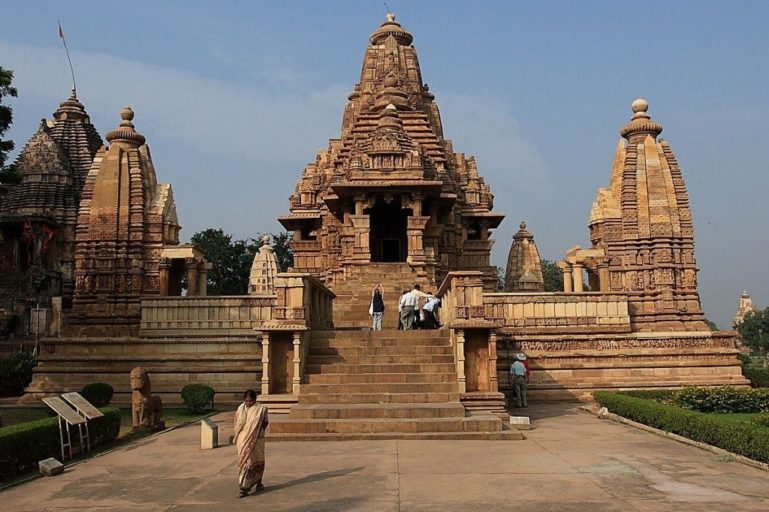8. Khajuraho:

Khajuraho Temples History : Madhya Pradesh is land of great antiquity. Madhya Pradesh is the home of monuments representative of various periods of history. Among most popular world heritage sites of Central India like Rock paintings, Buddhist Stupas and Temples, Khajuraho is known for its ornate temples that are spectacular piece of human imagination, artistic creativity, magnificent architectural work and deriving spiritual peace through eroticism.
Khajuraho Temples are among the most beautiful medieval monuments in the country. These temples were built by the Chandella ruler between AD 900 and 1130. It was the golden period of Chandella rulers. It is presumed that it was every Chandella ruler has built atleast one temple in his lifetime. So all Khajuraho Temples are not constructed by any single Chandella ruler but Temple building was a tradition of Chandella rulers and followed by almost all rulers of Chandella dynasty.
The first recorded mention of the Khajuraho temples is in the accounts of Abu Rihan al Biruni in AD 1022 and the Arab traveler Ibn Battuta in AD 1335. Local tradition lists 85 temples in Khajuraho out of which only 25 temples are surviving after various stages of preservation and care. All these temples are scattered over an area of about 9 square miles.
Khajuraho is believed to be the religious capital of Chandellas. Chandella rulers had tried to discriminate politics from religious & cultural activities, so they established their political capital in Mahoba which is about 60km. away from Khajuraho and religious/cultural capital in Khajuraho. Whole Khajuraho was enclosed by a wall with about 8 gates used for entry/exit. It is believed that each gate is flanked by two date/palm trees. Due to these date trees present Khajuraho get its name Khajura-vahika. In hindi language, “Khajura” means ‘Date’ and “Vahika” means ‘Bearing’. In history Khajuraho is also described with the name of Jejakbhukti.
After fall of Chandella dynasty (after AD 1150), Khajuraho Temples suffered destruction & disfigurement by muslim invaders in this area which forced local people to leave Khajuraho. As muslim invaders had a ruling policy of intolerance for worship places of other religions so all the citizens of Khajuraho left the town with a hope that its solitude will not attract attention of Muslim invaders into the temple area and in this way both temple and they themselves will remain unhurt. So from about 13th century to 18th century, Khajuraho temples remain in forest cover, away from popularity till it was re-discovered by British engineer T. S. Burt.
Here is Top Best Places To Visit In India
1. Agra:
2. Delhi:
3. Varanasi:
4. Jaipur:
5. Amritsar:
6. Udaipur:
7. Ajanta Ellora Caves:
8. Khajuraho:
9. Jaisalmer:
10. Leh Ladakh:
